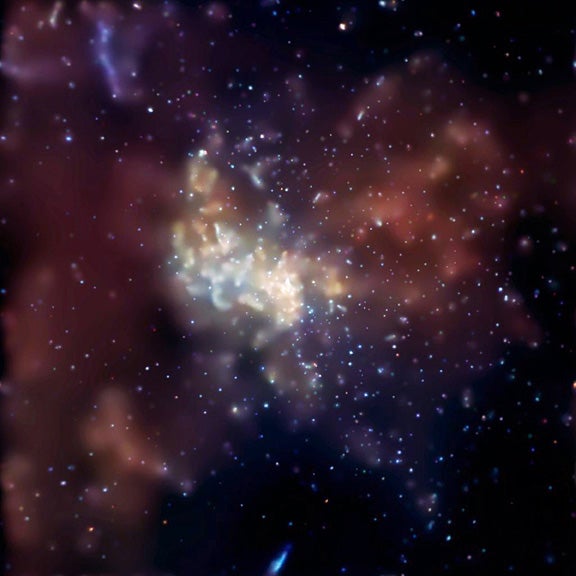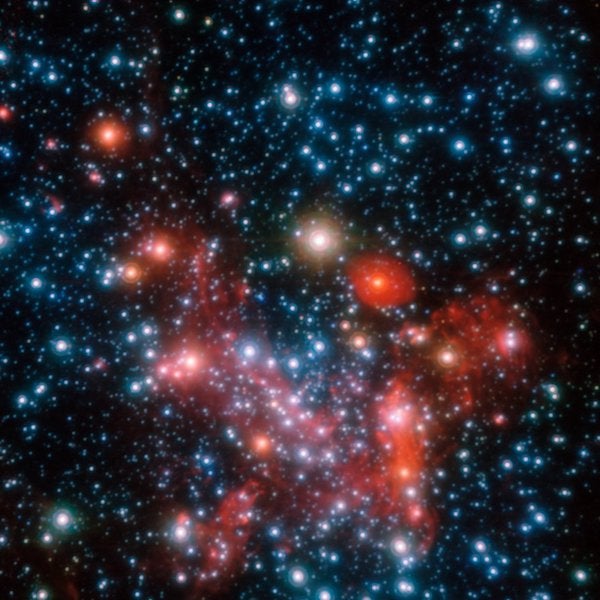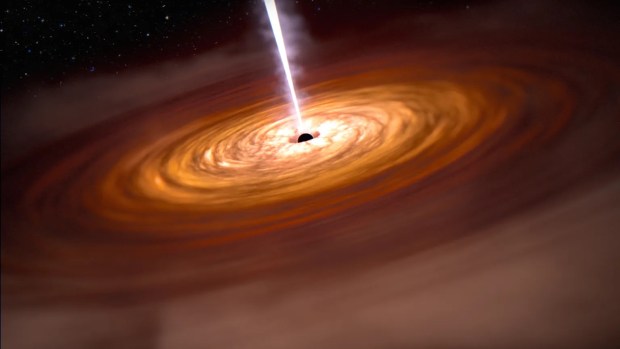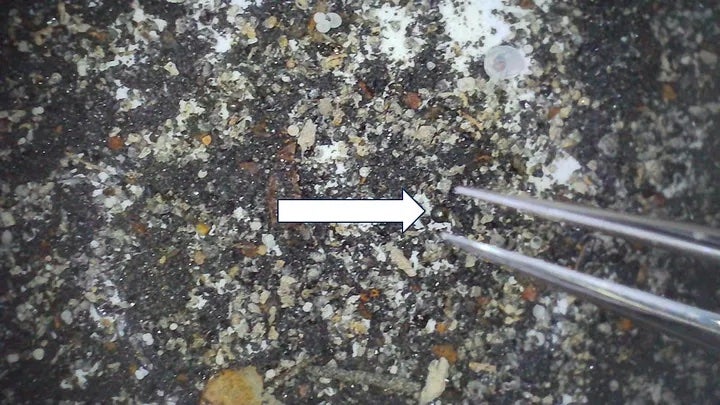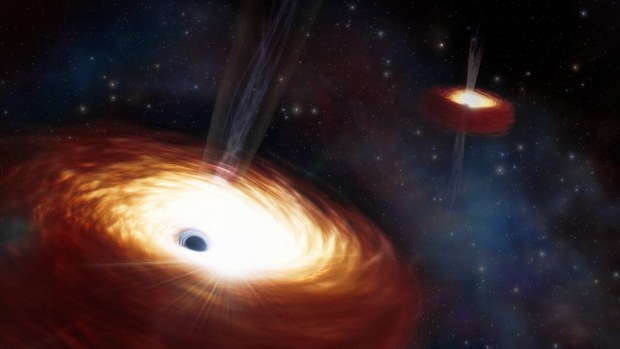The Sun circles the hub of our Milky Way just as a planet circles a star. It orbits about 26,000 light-years from the center of our galaxy, on the Orion Spur that shoots off from the Sagittarius spiral arm.
The stars are not as tightly packed in our region of the Milky Way as they are at the galaxy’s nucleus. This is fortunate for planet Earth: The interior of the galaxy is a dangerous place.
At the very center of the galaxy resides a mysterious and deadly energy source known to astronomers as Sagittarius A*, or Sgr A* (pronounced Sagittarius “A”-star). Its strong magnetic fields trace lines and webs through incandescent gas. And its intense gravity imprisons stars, sending them zipping around a central point that appears empty to visible-light telescopes.
The Milky Way’s supermassive black hole
But the stars’ looping orbits and the strong gusts within the surrounding gases betray the nature of the Milky Way’s beating heart. As early as 1971, astronomers suggested that heart might be a supermassive black hole. But it wasn’t until the 1990s that astronomers were able to discern the orbits of central stars well enough to determine that the central driving force of the cosmic whirlpool must pack the mass of millions of stars into an incomprehensibly small region of space just a few light-days across. But astronomers couldn’t find nearly enough stars in the area to provide such gravity, while the stars and gas they could see inhabiting the region were traveling at unimaginable speeds — sometimes at fractions of the speed of light.
The only object with the size and mass capable of producing the effects astronomers saw was a supermassive black hole.
That black hole and its swirling accretion disk were finally observed (along with the center of galaxy M87) in 2017 by the Event Horizon Telescope (EHT), an array of eight linked radio observatories across Earth that form a single “Earth-sized” virtual telescope. It took years of careful data analysis and modeling to produce the first image of Sgr A*, which was released in May 2022.
The S stars
A decade before EHT released its image of Sgr A*, researchers put together a time-lapse “movie” of the stars in the galactic center, a grouping called S stars. The dance of stars around the position of Sgr A over a 10-year period (from 1992 to 2002) reveals a nightmarish, relativistic wonderland. Under the influence of the black hole, several of the S stars are moving in tight, highly elliptical orbits. They can reach breakneck speeds as they make their closest approach the black hole, up to a few percent the speed of light.
Recently, a University of Cologne team led by Florian Peissker announced the discovery of five new S stars that orbit the black hole even more closely than any previously seen. They are S4711, S4712, S4713, S4714, and S4715. The fastest may be S4714, traveling 15,000 miles/second (24,000 km/second).
We’re likely not done finding new S stars, Peissker tells Astronomy. He believes some 40 to 140 additional stars could be discovered orbiting Sgr A* as part of the 130-million-light-year-wide S star cluster, just based on the current limits of modern-day telescopes.
More stars, more mysteries
The tightly packed gang of S stars is not homogeneous, but rather comes in an assortment of types, Peissker says. Some are aging, evolved stars, but some are quite young.
The variety and nature of S stars present a mystery — particularly the presence of young stars, Peissker says. “We know for a fact that these stars must have formed close by. This is strange since star formation is not expected that close to Sgr A*.” That’s because stars cannot form in the classical way within regions hosting the extreme tidal forces found around Sgr A. Star formation through the coalescence of cold material should not be possible in those wild gravitational conditions; objects tend to be torn apart rather than glomming together.
Astronomers have several theories, however, as to how such young stars might find themselves in the vicinity of Sgr A*. Among them is the idea that some stars may have formed normally in binary pairs at a greater distance and then been pulled inward. As they approach the black hole, one stellar member could be captured in a roughly circular orbit, while the second is given an orbital kick that sends it completely out of the galaxy. Another model suggests that both stars could be captured into eccentric, elliptical orbits, much as those we see in the recently discovered S stars.
More research is needed, Peissker concludes, to determine how the S stars were formed and got into their current orbits.
The wild trajectories of S stars at the heart of the galaxy illustrate both the raw power and quantum complexity of black holes. Certainly in years to come, astronomers hope to begin unlocking more of the mysteries surrounding the Milky Way’s massive monster and the speedy stars that circle it.

